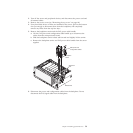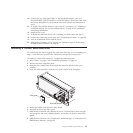
Table 8. High-performance memory-card installation sequence
DIMM pair installation
order
Memory-card connector
number DIMM connector numbers
First 1 1 and 8
Second 7 1 and 8
Third 3 1 and 8
Fourth 5 1 and 8
Fifth 2 1 and 8
Sixth 8 1 and 8
Seventh 4 1 and 8
Eighth 6 1 and 8
Ninth 1 3 and 6
Tenth 7 3 and 6
Eleventh 3 3 and 6
Twelfth 5 3 and 6
Thirteenth 2 3 and 6
Fourteenth 8 3 and 6
Fifteenth 4 3 and 6
Sixteenth 6 3 and 6
Seventeenth 1 2 and 7
Eighteenth 7 2 and 7
Nineteenth 3 2 and 7
Twentieth 5 2 and 7
Twenty-first 2 2 and 7
Twenty-second 8 2 and 7
Twenty-third 4 2 and 7
Twenty-fourth 6 2 and 7
Twenty-fifth 1 4 and 5
Twenty-sixth 7 4 and 5
Twenty-seventh 3 4 and 5
Twenty-eighth 5 4 and 5
Twenty-ninth 2 4 and 5
Thirtieth 8 4 and 5
Thirty-first 4 4 and 5
Thirty-second 6 4 and 5
Memory mirroring replicates and stores data on two pairs of DIMMs
simultaneously. If a memory failure occurs, the memory controller switches from
the primary set of DIMMs to the backup set of DIMMs.
When you use memory mirroring, consider the following information:
– To enable memory mirroring through the Setup utility, select System Settings
> Memory. For more information, see “Using the Setup utility” on page 96.
– Memory mirroring reduces the available memory by half. For example, if the
server has 64 GB of installed memory, only 32 GB of addressable memory is
Chapter 2. Installing optional devices 67


















